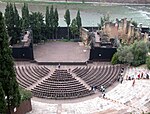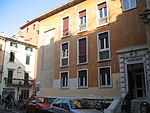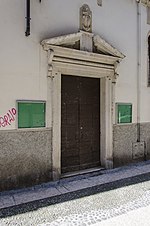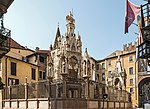Ponte Pietra (Verona)
Bridges completed in the 1st century BCBridges in VeronaDeck arch bridgesEuropean bridge (structure) stubsItalian building and structure stubs ... and 4 more
Italy transport stubsRoman bridges in ItalyStone bridges in ItalyTransport in Verona

The Ponte Pietra (Italian for "Stone Bridge"), is a Roman arch bridge crossing the Adige River in Verona, Italy. The bridge was completed in 100 BC, and the Via Postumia from Genoa to Aquileia passed over it. It is the oldest bridge in Verona.It originally flanked another Roman bridge, the Pons Postumius; both structures provided the city (on the right bank) with access to the Roman theatre on the east bank. The arch nearest to the right bank of the Adige was rebuilt in 1298 by Alberto I della Scala. Four arches of the bridge were blown up by retreating German troops in World War II, but rebuilt in 1957 with original materials.
Excerpt from the Wikipedia article Ponte Pietra (Verona) (License: CC BY-SA 3.0, Authors, Images).Ponte Pietra (Verona)
Ponte Pietra, Verona Veronetta
Geographical coordinates (GPS) Address Nearby Places Show on map
Geographical coordinates (GPS)
| Latitude | Longitude |
|---|---|
| N 45.4477 ° | E 10.9999 ° |
Address
Ponte Pietra
Ponte Pietra
37121 Verona, Veronetta
Veneto, Italy
Open on Google Maps











